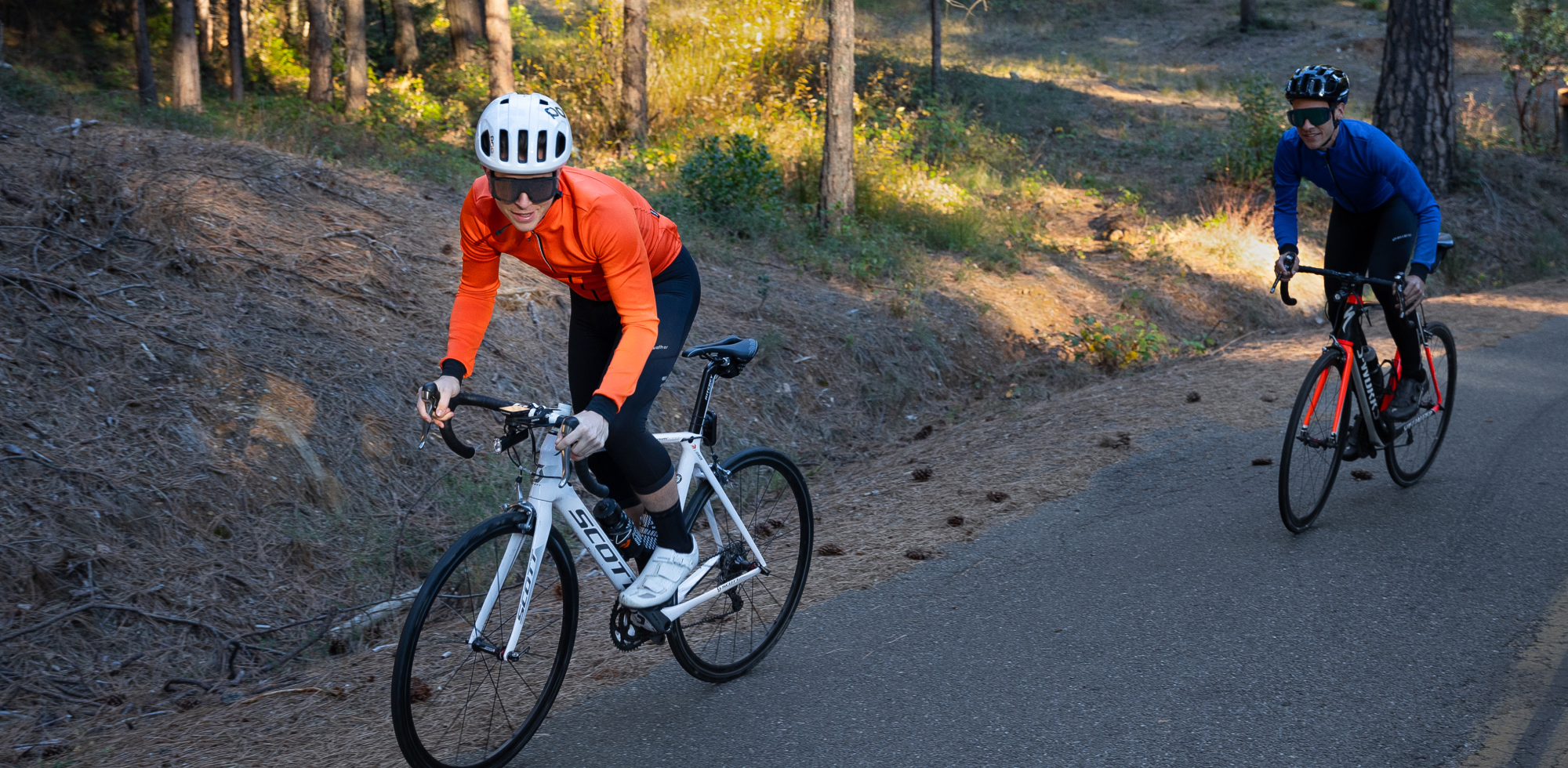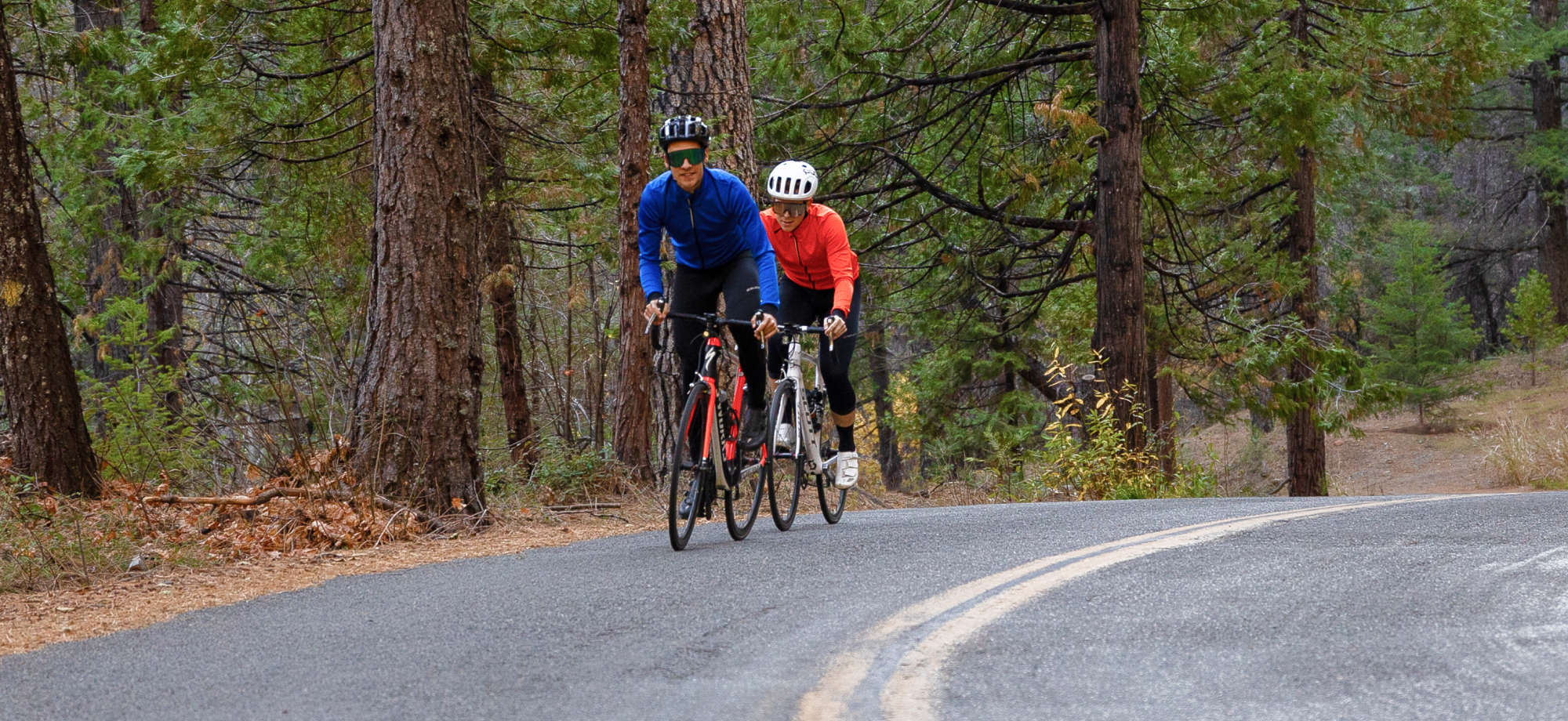Century Essentials
Everything you need for your first, second, or n+1 century!

Preparing For Your Century
Got your eyes on a century? Riding one hundred miles all at once is no small feat. Even veteran riders can take six, seven, or eight hours to complete a relatively flat century in good weather. That's a long time to sit on a bicycle. But with adequate preparation and planning, you will be up to the task!
First, you need to decide what kind of century you want to ride. Organized centuries, like Chico's Wildflower Century, are large, social events replete with well-stocked food stops and marked routes. They take care of the logistics of hydration, nutrition, mechanical failure, and route planning. And with other cyclists riding the same route, there is an element of safety and camaraderie not found in a solo effort.
But maybe you want to go it alone! If that's the case, plan a route you can complete. Avoid extremes: nothing too hilly, nothing too windy, and nothing too hot or cold. Consider also where you might stop for restrooms and water, and whether the roads are safe to ride! You will also want to have an easy way to track your progress along the route so you don't get lost, like a map or a route-tracking app like Strava or RideWithGPS.
Training
Once you have your event or route planned, it's time to get to work. There are many century training programs online to help you achieve your goal, but they all follow the same basic formula: start early, consistently build mileage and intensity, and practice the efforts and conditions you expect to face on your big day.
Like most other things in our sport, your training is specific to your individual abilities and preferences. If you are starting from zero, you may want to log up to sixteen weeks of training before your century. If you are starting from a base level of fitness, you may only need eight weeks of training. Whatever your current fitness, you will likely want to follow a weekly training pattern of frequent, shorter rides during the week, and a long ride during the weekend.
Start with several 60 minute rides during the workweek, and one long ride on the weekend. With each week, add a half hour in the saddle to the long ride. If you stay consistent, and make sure to take adequate rest between your harder sessions, your long rides will exceed four to five hours within a couple months. Just a little bit longer and you're across the finish line!

Gear
If you are going to ride 100 miles, you want to do it in comfort. First, make sure your bike is both appropriate and ready to ride 100 miles. Second, make sure your bike fits. Third, wear clothing that will stand up to the variety of conditions you'll face during your century.
Your Bicycle
Your bike choice will play a big role in your performance and comfort. Cyclists complete centuries on road bikes, mountain bikes, fixies, e-bikes, handcycles, and every other human-powered, wheeled contraption. Just make sure you train on the same bike you will ride for your event. It's also important to choose the right kind of tires for your event. We have guides for road, gravel, and mountain bike tire selection. Once you have your gear on, give your entire bike a good cleaning. In the process, check your nuts and bolts, shifters and brakes. Finally, make sure you pack a basic toolkit for road-side repairs and tube changes.
If you put in the training, you will learn how your bike/body interface feels over longer and longer rides. While discomfort from extended use and body adaptation is expected, pain is typically a warning sign of other problems. If you experience pain on your longer rides, and aren't ramping up too quickly, then you may want to take a look at your bike fit. Depending on the location of your pain, trying a different saddle may go a long way to solving your problem! If your pain persists, talk to a professional bike fitter and/or physician.

Clothing Essentials
When it comes to clothing, wear items in which you found comfort during your long training rides--especially your padded bibs! You will also want to wear or bring a couple other necessary pieces, including a vest/gilet and a base layer. A lightweight vest, folded into your jersey pocket, can rescue your century. It will help you warm up in the morning, keep you dry in afternoon showers, and keep you warm on long descents. Similarly, a base layer's versatility makes it uniquely suited to long rides. It reduces chafe from bib straps, manages sweat in the heat, and keeps you warm in the cold. Check out our winter layering guide for more info!

Nutrition
Fueling for your ride is just as important as any other consideration. Riding a century takes a lot of energy, so it's a good idea to go into the ride topped up. Eat the same kind of foods that worked for your long training rides; dinners dense in complex carbohydrates, and breakfasts slow-burning and easy to digest.
Once your ride starts, eat a little at a time, and eat often. Ideally, you will eat a few hundred calories of food every 45 minutes to an hour, accompanied by adequate hydration. Pack foods that are easy to eat on the bike, like bars, bananas, and sandwiches. Most century events will have a lunch stop. Take advantage of it; eating a proper lunch will go a long way toward getting you to the end, and it will preserve your appetite for sugary sweets like gummies and gels when you start getting tired.

Finally, you can make the most of your nutrition by pacing yourself. Don't go too hard, don't go too soft. Remember your training. Take some photos. Enjoy the ride.


